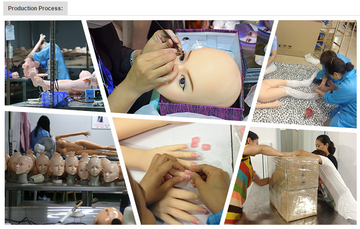Silicone dolls have revolutionized adult entertainment, companionship, and even therapeutic applications. But with prices ranging from 100 to over 5,000, understanding what drives this cost disparity and how to select the right product is critical. In this guide, we’ll break down the key factors to consider and why quality comes at a premium.
Why Silicone Dolls Vary So Much in Price?
The price gap stems from materials, craftsmanship, brand positioning, and added features. Here’s a deep dive:
1. Material Quality: Silicone vs. TPE
• High-End Silicone (Premium):
Medical-grade silicone dominates luxury dolls, offering hypoallergenic properties, durability, and ultra-realistic textures . It resists discoloration and maintains elasticity over years, justifying prices upwards of $2,000.
• TPE (Budget-Friendly):
Thermoplastic elastomer dolls cost 100–500 but may degrade faster, develop odors, or lose flexibility. While cheaper, they often lack the refinement of silicone .
2. Craftsmanship and Design
• Hand-Painted Features:
Premium dolls feature hyper-realistic skin textures, layered hair, and anatomically accurate details, crafted by skilled artisans. These labor-intensive processes add 500–2,000+ to the price.
• Joint Mobility:
High-end models include ball-jointed limbs for poseability, mimicking human flexibility. Basic dolls often have rigid joints or limited movement.
3. Functional Add-Ons
• Heating Elements:
Built-in warming systems (e.g., 300–800) enhance realism but require advanced circuitry.
• AI Integration:
Top-tier dolls with voice recognition, responsive behaviors, or app connectivity (e.g., Real Doll’s Alpha dolls) cost $5,000+ due to cutting-edge technology .
4. Brand Prestige
• Established Brands:
Companies like Real Doll or Oriental Doll charge a premium for reputation, warranties, and customer support. Their dolls often serve as status symbols in niche communities.
• Generic Brands:
Mass-market options prioritize affordability over durability, targeting casual users.
How to Choose the Right Silicone Doll
Follow these steps to balance budget and quality:
1. Define Your Needs
• Purpose:
◦ Companionship: Prioritize realism and emotional design.
◦ Hobby/Art: Focus on poseability and customization.
◦ Therapeutic Use: Seek medical-grade materials and hygiene certifications.
2. Material Check
• Ask for Certifications:
Ensure silicone is phthalate-free and FDA-approved. TPE dolls may emit odors over time .
• Test Flexibility:
Genuine silicone feels smooth and springs back when stretched.
3. Evaluate Features
• Skin Texture:
Premium dolls have vein patterns, pores, and subtle imperfections for authenticity.
• Customization:
High-end brands allow adjustments to eye color, hairstyle, and even breast size.
4. Budget Allocation
• 100–300: Entry-level TPE dolls for experimentation.
• 500–2,000: Mid-range silicone dolls with basic articulation.
• $3,000+: Luxury models with AI, heating, and ultra-detailed craftsmanship.
Common Mistakes to Avoid
• Ignoring Maintenance: Silicone requires regular cleaning to prevent bacterial buildup.
• Overpaying for “Brand Hype”: Research reviews and compare specs across brands.
• Skipping Warranty: Reputable sellers offer 1–3-year warranties against defects.
FAQ: Silicone Dolls
Q: Are silicone dolls worth the investment?
A: For long-term use or therapeutic benefits, yes. Cheap TPE dolls often degrade within months.
Q: Can I repair a damaged silicone doll?
A: Minor cracks can be fixed with silicone glue, but major repairs are costly. Invest in quality upfront.
Q: How to store silicone dolls properly?
A: Keep them in a cool, dry place away from UV light to prevent yellowing.
Final Thoughts
Choosing a silicone doll is akin to selecting a luxury item—prioritize material integrity, craftsmanship, and brand credibility. While budget options exist, investing in a premium model ensures durability, realism, and peace of mind.




